How Daniel Kanter Blogged About Rehabbing Houses and Then Learned How
By Joan Vos MacDonald | Photos by Daniel Kanter | Fall 2024 | House Feature
Daniel Kanter has renovated several homes, but it wasn’t a career path he expected to take or necessarily had the required skills for. When he bought his first house in 2013, an 1865 Greek Revival in Kingston, it lacked a working toilet, a functional kitchen, a certifiable electrical system, and a sound roof. Despite feeling daunted by the project and the funding it required, he realized he never felt so excited in this life.
“I like an underdog,” says Kanter. “I thought, oh my God, this is a beautiful house that really needs some love.”
During the subsequent decade he removed dropped ceilings, exposed brick walls, and restored the home’s original floor plan, all the while blogging about the transformation. Kanter’s blog Manhattan Nest began as a joke in 2010, before he owned a home or had any renovation skills. At the time, he noticed the online trend of conservative women bloggers who were renovating homes and talking about their renovations.

anter added timely historic elements to the home, such as the simple yet elegant mantel over the living room fireplace.
“And so, in my 20-year-old-sort-of-stoner way, I thought it would be really funny if this Jewish kid from New York took that genre, but did it on my own terms,” says Kanter. “I had no budget and all of these people are in the Midwest and have rich husbands. I just thought this was a hilarious idea and then the joke was sort of on me. People actually started reading it.”
At the time Kanter, a creative writing major, was moving into his first apartment so he wrote about setting up his personal space. He mostly blogged about decor, but his engaging writing style and willingness to experiment attracted attention and landed him decorating gigs. Purchasing his Kingston home, however, forced him to acquire actual renovation skills. He had not grown up in a do-it-yourself home.
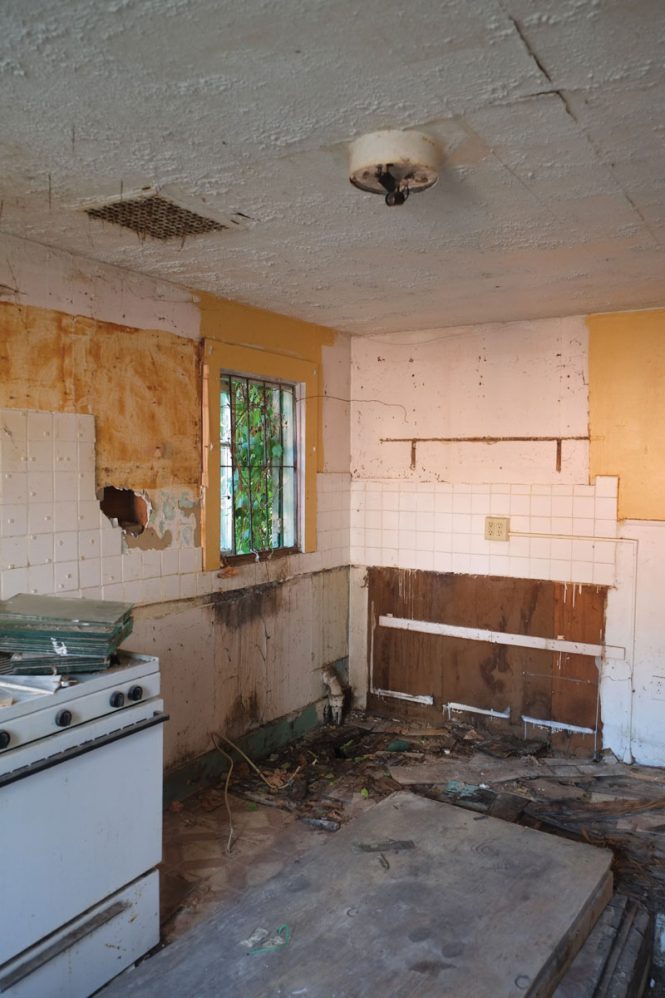
The condemned structure was in bad shape when Kanter purchased it. The home had no plumbing, no heating system, no insulation, and a dodgy electrical system.
“I grew up in a brand-new house where the only thing I ever did with my parents was change the light bulbs,” says Kanter. Gaining skills involved a lot of trial and error.
“My early work on my house was hilarious,” says Kanter. “I had no idea what I was doing. I was basically skimcoating my entire kitchen with the product called Ready Patch, which is just for patching holes. And someone commented on the blog, have you ever heard of joint compound? Since then I’ve learned a little bit of everything. The thing I probably like doing most is carpentry and woodwork, but I’m a pretty decent plumber now. I’m a pretty good electrician. I can frame, I can roof, I can set up siding.”
Do and DIY
Followers of his blog and on Instagram offered practical advice, and he has since paid that kindness forward via the DIY projects he explains on his blog.
“I can’t think of too many other things that bring so many different people together,” says Kanter. “I may not agree with your politics, but if you know how to restore a window and I need to learn how to restore a window and you’re super nice and willing to tell me, we will get along.”
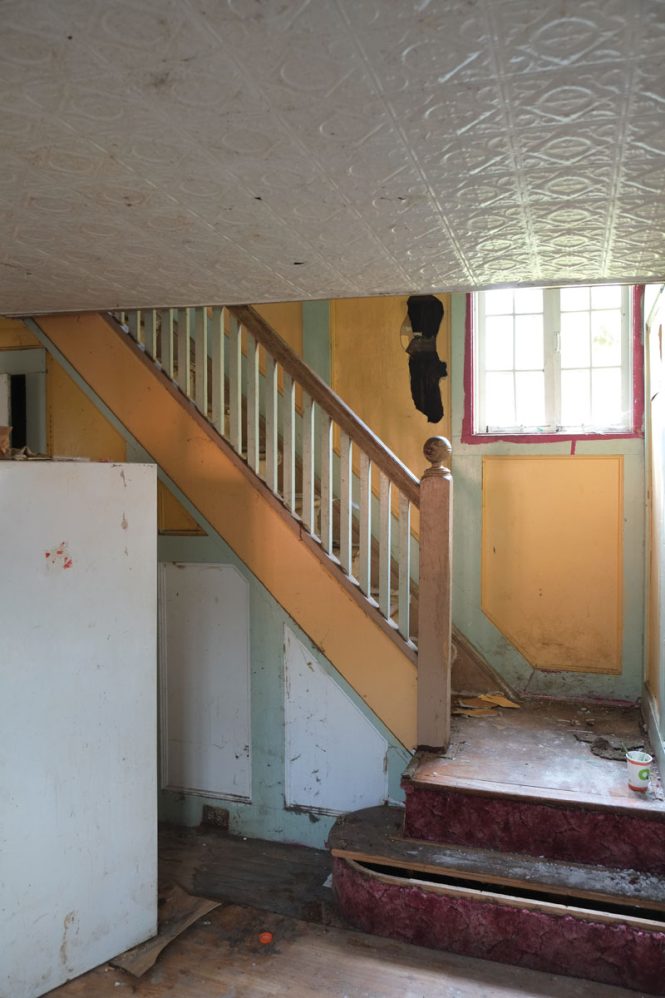
Despite the extensive structural rot, the building offered salvageable elements such as the tin ceiling covered by a layer of white paint.
Elizabeth and Ethan Finkelstein followed his blog before launching their successful Cheap Old Houses brand. It sparked the kind of friendship Kanter says often exists between people who love old houses. Naturally, his own house appeared on the first season of their HGTV show.
“The old house community is a thing and the people in it are generally all cut from the same cloth,” says Kanter. “We all have rescue animals because we rescue houses, we rescue dogs, we rescue parakeets, whatever. Generally we’re very supportive, very into sharing knowledge and information. Some of my absolute closest “ride or die” friends came from the blog. Some of them I’ve never even met in person, but I feel like we’re super close. So it has been great for developing personal relationships and sometimes professional ones.”
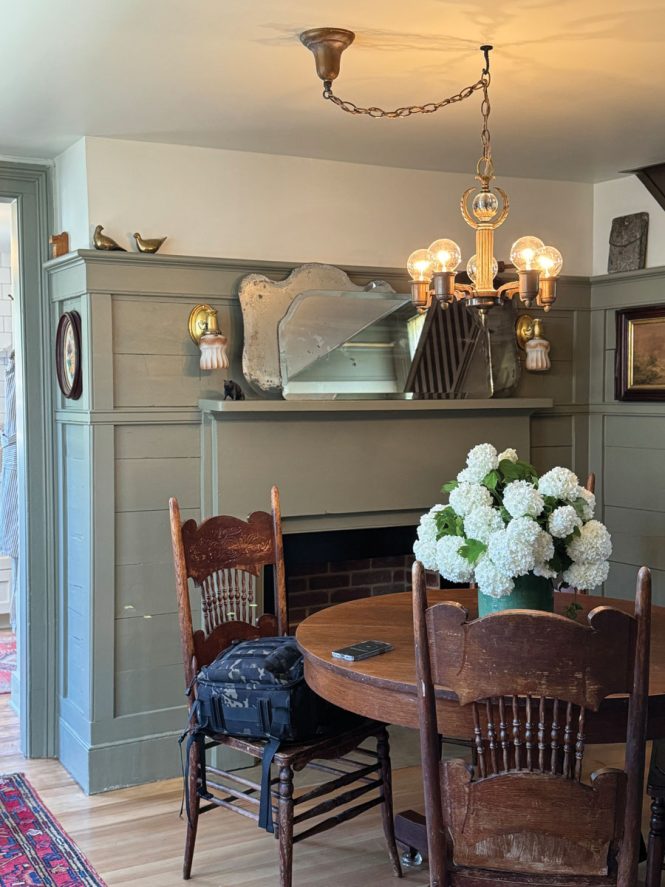
Salvaged materials were used to create wainscoting and moldings in the dining area.
Respectful Restorations
Kanter, who refers to himself as a “serial renovator,” recently completed a 10-year project, transforming a mid-19th century house named Bluestone Cottage. When he purchased the urban cottage, it lacked a heating system and plumbing, but it did have plenty of structural rot. After making it livable, he focused on making it beautiful, restoring existing historic elements, such as hardware and fixtures, and adding salvaged architectural materials to create wainscoting and moldings, then updating a tired kitchen with fresh white tile and a white apron sink. This labor of love took 10 years, because he kept running out of money and had to take time-consuming renovation jobs to finance subsequent rounds of work.
“I bought it in 2014, thinking in my 24-year-old little brain that I could do this in six months for 50 grand,” he says with a self-deprecating laugh.
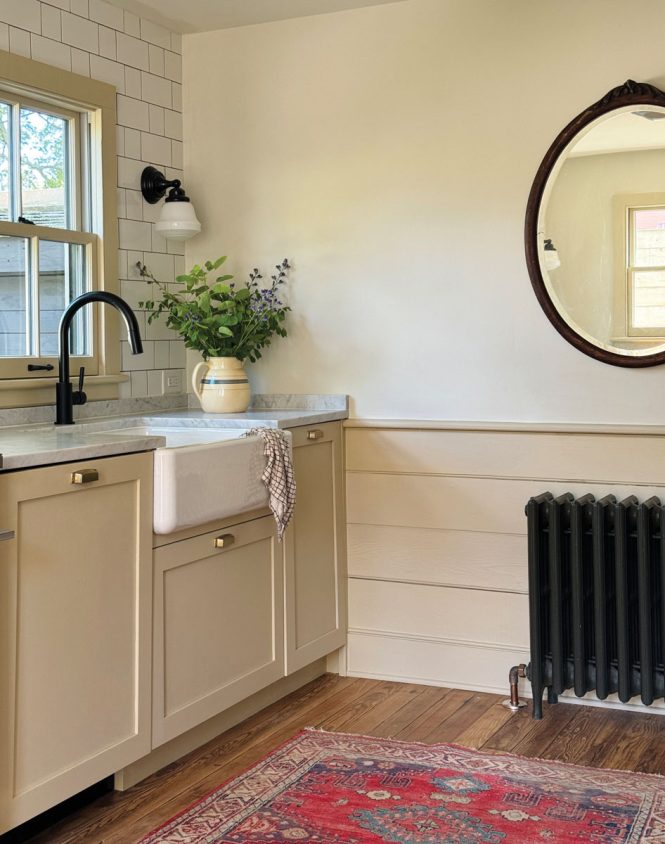
The newly renovated kitchen features white Carrara marble countertops, a wall mixing sizes of subway tiles and a generous apron front sink.
Kanter is not just a serial renovator. He’s an optimist, who can’t help but commit to the possibilities in old houses. That’s what led him to volunteer for the nonprofit Kingston City Land Bank, which acquires distressed properties, renovates them, and sells them to provide affordable housing.
“At the end of 2018, I was appointed to the board of the newly founded Kingston City Land Bank,” says Kanter. “And our mission was basically to get vacant, abandoned, derelict, foreclosed properties back on the tax rolls. And the form that ended up taking was primarily doing a full rehab on single family homes. Then we sold them as an affordable first time home ownership opportunity.”
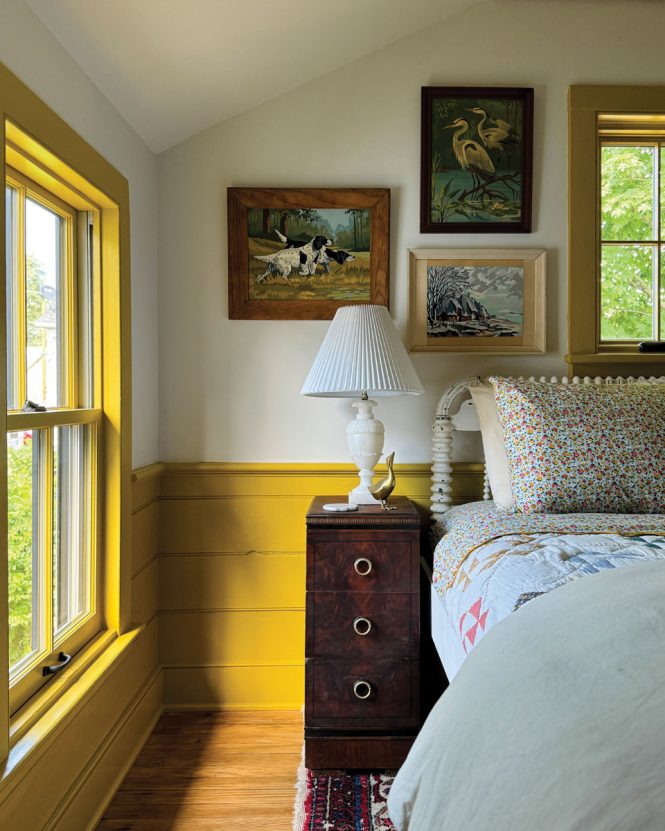
During his five years as chairman he wore many hats, designing, managing construction, and physically pitching in on a variety of projects.
“Basically, what I’ve spent my entire adult life trying to demonstrate is that quality renovation work and even restoration work does not have to include an enormous budget,” he says. “This felt like a perfect place to put what I’d already been doing to work.”
Each house was respectfully restored with utmost respect for its heritage.
“We put really high-quality stuff in there, within budget, but we did lots of creative sourcing to get there,” says Kanter. “I designed 15 kitchens where every single thing in the kitchen cost under $10,000. Fifteen very different kitchens. It was a great experience. I’m really proud of the work we did. We won the Excellence in Historic Preservation Award from the Preservation League of New York State that year. Pier 47 in Manhattan also was a recipient of the award, which is a multimillion, maybe billion-dollar project. And then there’s us and our very ordinary little vernacular houses in Kingston.”
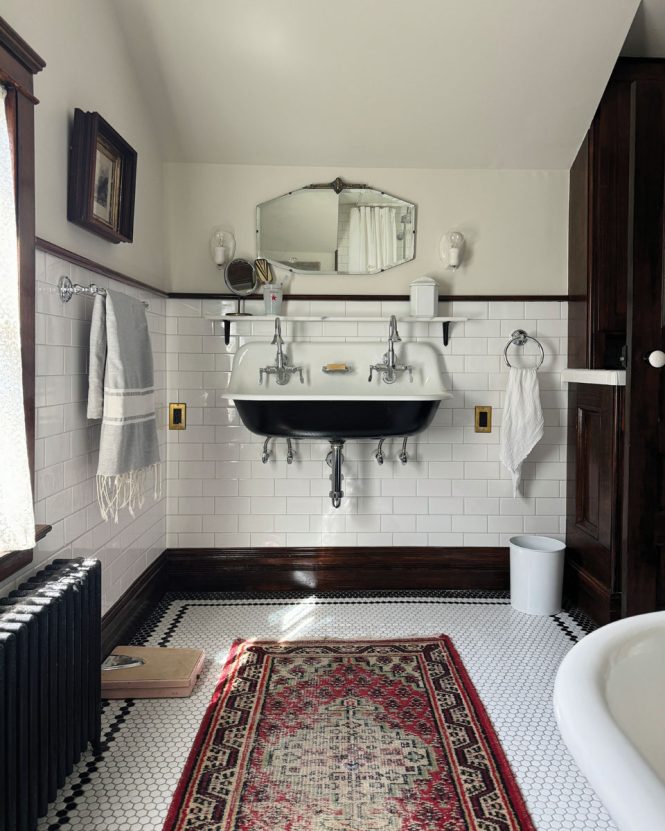
For two years he has cohosted a podcast called “True Tales from Old Houses,” an entertaining and educational show for lovers of old houses.
“This season we talked to a paint spectrum analyst about trying to figure out original paint colors,” says Kanter. “We talked to a conservator from the Frank Lloyd Wright Foundation Museum last season. We talked to a guy renovating the first commercial cruise ship produced by Germany after World War II, which somehow landed in southern California.”
He also video interviewed area homeowners with extraordinary houses, a project that began during the pandemic and one he hopes to resume. In the near future Kanter plans to focus on consulting work, offering advice on renovations.
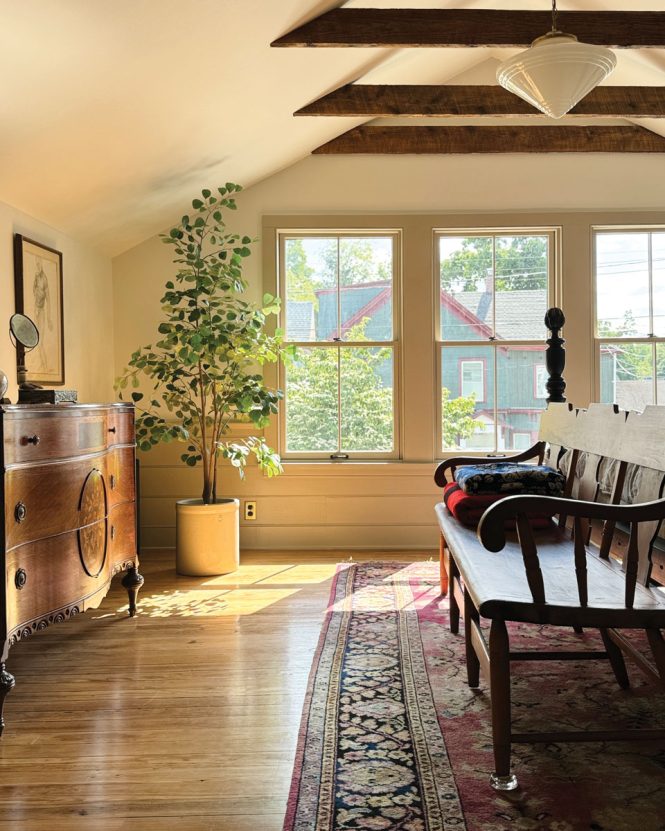
The primary bedroom
“I’ve done enough of these, so I think I’m pretty good at just helping people really wrap their minds around a project.”
Now that he’s sold the cottage, Kanter also plans to spend more time on his own house. But there is a property close by that might be fun to renovate. And it might not be that hard or expensive to fix up. For a serial renovator, an opportunity like that is hard to pass up.
